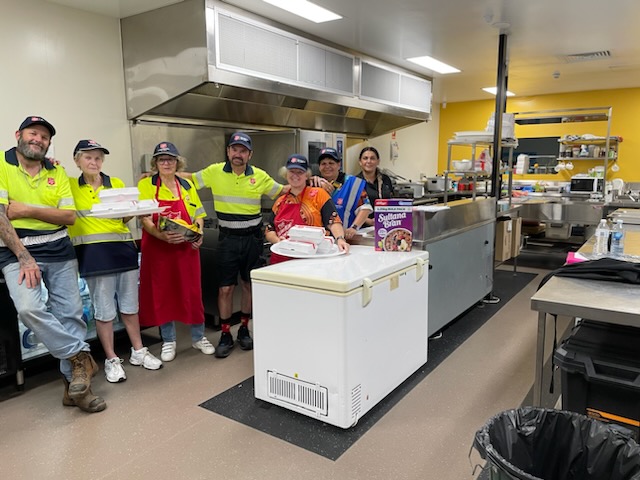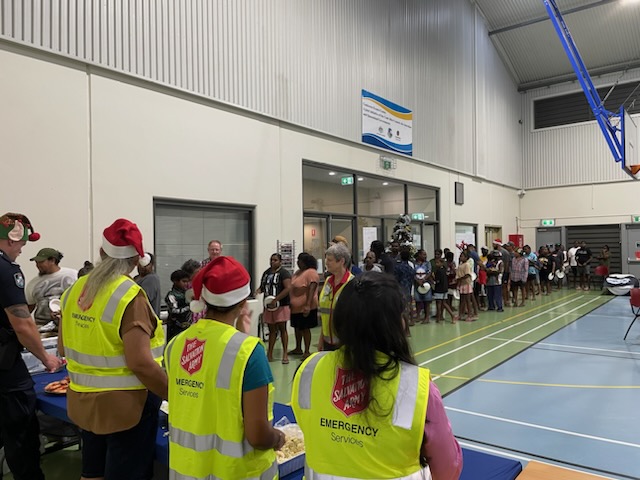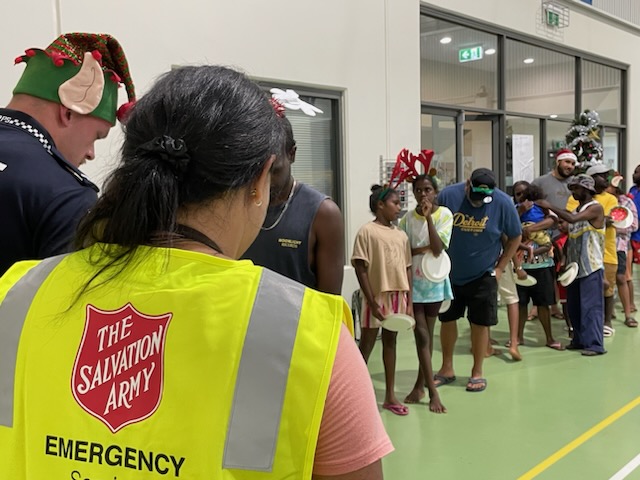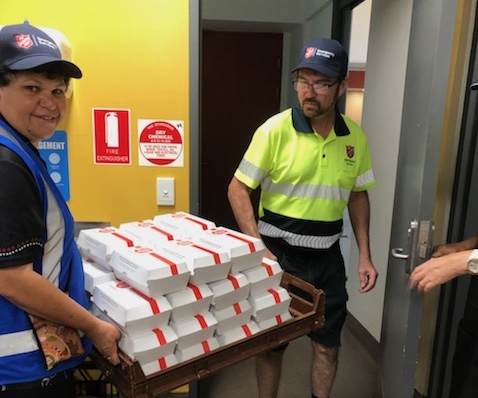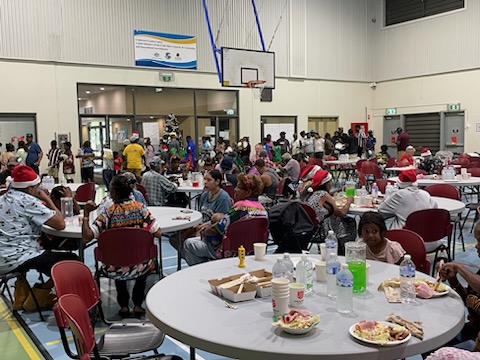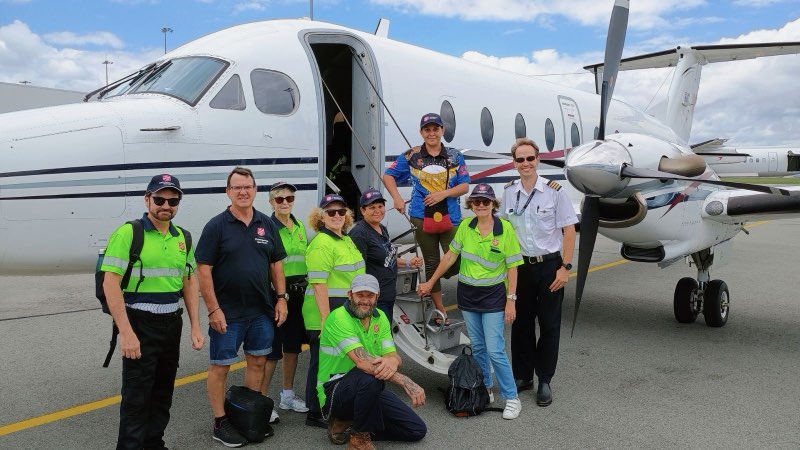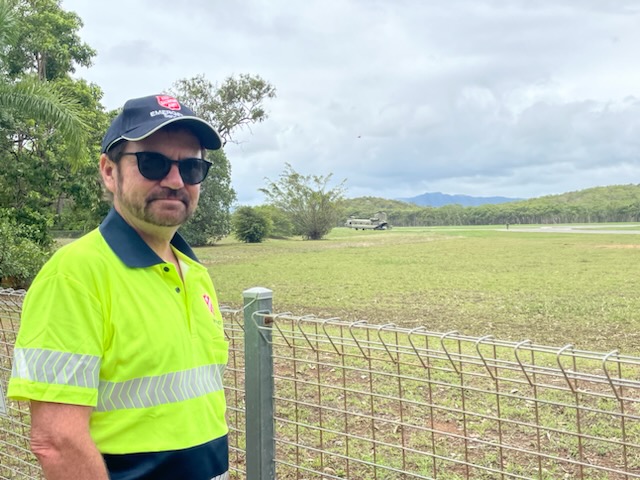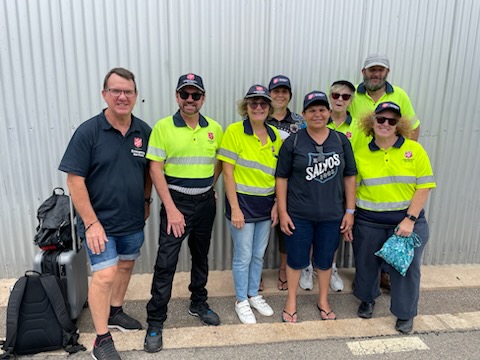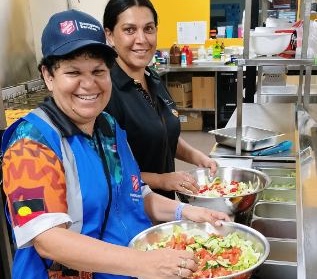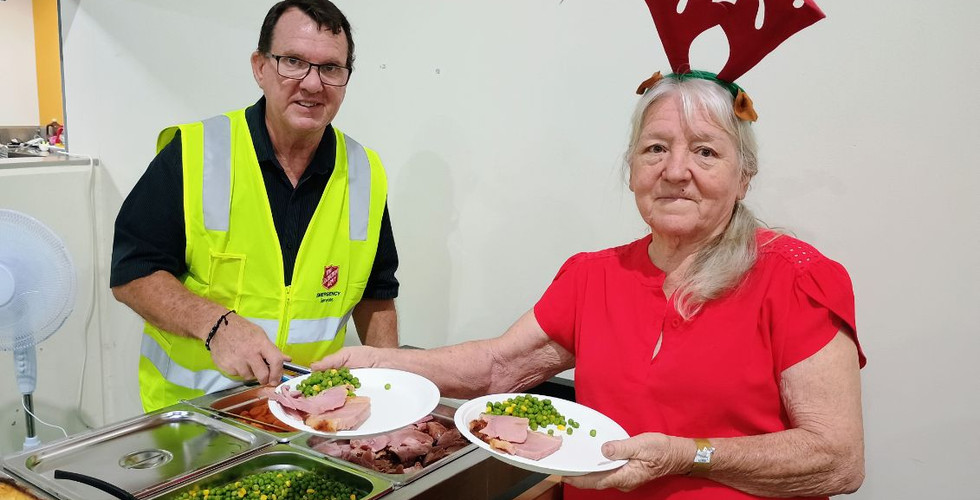Salvation Army responds to severe weather events in Queensland
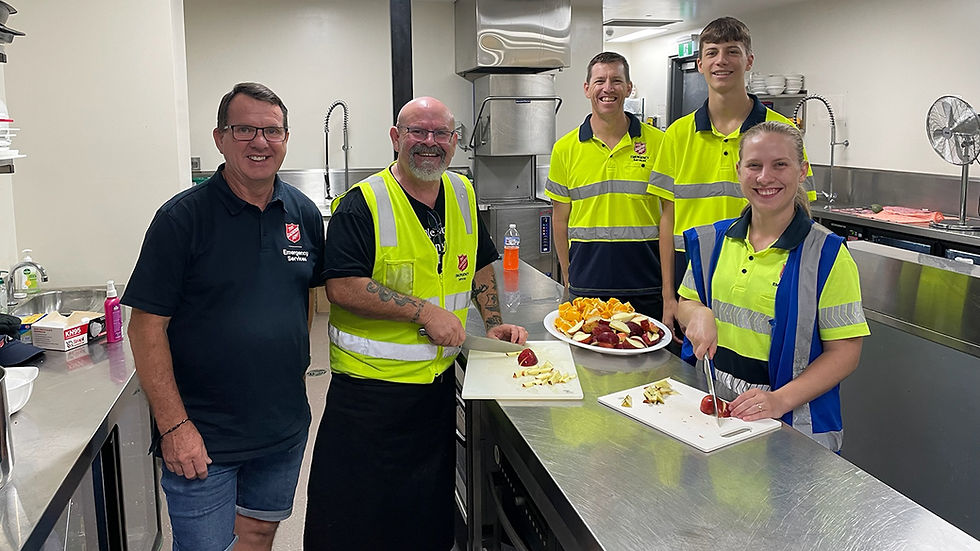
BY SIMONE WORTHING
Salvation Army Emergency Services (SAES) teams have been on the ground responding to the officially named ‘South East Queensland severe storms and rainfall event’, which has been impacting the area since Christmas night 2023.
An unprecedented blackout was caused by a tornado on the night of 25 December, which ripped through the Gold Coast, Scenic Rim and Logan City with winds of 150 km/h. Huge trees were uprooted, power poles and lines ripped out, and houses and businesses impacted with minor to severe damage.
Many council areas in South East Queensland are affected by the ongoing impacts of these events. Tragically, lives have also been lost.
Intense and prolonged local rainfall and further storms continued to pound the region over the New Year period, causing flash and major flooding. A mini heatwave also hit the area in the days after Christmas, while many areas were without power.
“The SAES response teams (catering) were activated to two evacuation centres in Upper Coomera and Nerang, and one first-responder activation in Chandler,” said Adam Cole, SAES Response Coordinator for Southern Queensland.

The SAES recovery teams supported the four government recovery hubs.
“The teams were supporting local communities as they faced the early recovery phase across Queensland,” Adam said. “This initially included the logistics of volunteers and food, short-term support and assisting the community and local council as needed and appropriate.
“So much has happened since Christmas. Everything is wet and flowing. We are dealing with the combined effects of a massive windstorm, loss of power and then flooding rain on top of an already impacted community.”
Recovery phase – volunteers needed
As this story goes live, SAES teams are working at six recovery hubs – Coombabah, Jimboomba, Mount Tamborine, Mudgeeraba, Tamborine Village and Upper Coomera.
Three pop-up hubs will open for a few days in the coming days at Cedar Grove, Guanaba and Labrador. A couple of hubs will remain open for up to four weeks, depending on how the situation and response unfolds.
“On 2 January we had 10 of our people onsite at Upper Coomera,” said Major Sue Hopper, SAES National Program Manager, who was working at the hub for four days. “This is almost unheard of, but apart from Jimboomba, all other sites were closed due to flooding.
“We did 140 assessments. There were so many families to see – mostly families who’d had no power since Christmas, large families who have lost everything and whose homes are damaged from the storms and rains. It’s devastating to people, and when they are already in tough situations and something like this happens, it becomes catastrophic for them.”

The SAES volunteers, who are trained in psychological first aid, also listen to people, hear their stories and refer them to further help as needed. Lifeline is also represented in the hub, as well as Community Recovery with state government grants.
“We are desperate for volunteers,” said Sue. “People are lining up before we open, and we’ve had to turn some people away and ask them to come back the next day.
“Our volunteers are distributing financial assistance, doing intake, welcoming people and helping them fill out forms in the waiting area – where people are most anxious.
“Although my national role is in management, I like being hands-on, talking to and helping people. It’s rewarding. Although Major Leanne Stevens (Recovery Team Leader, SAES – National) reports to me, I volunteer to help her in situations like this.”
Two of the hubs – Mt Tamborine and Upper Coomera – received a visit today from Territorial Commander Commissioner Miriam Gluyas, who encouraged SAES crews and other Salvos volunteers.
“Well, I’ve been up to Mt Tamborine and Coomera this morning,” she said. “There are a lot of places where there is no power, they are restoring the lines, and there are huge trees down everywhere. I think it always comes back to the human face. It was lovely this morning up the mountain to come out of the centre, and a lady comes straight up to me, because of the uniform, and says, ‘Your team are remarkable, they just show incredible kindness, and I don’t know what I would’ve done without them.’
“And to see the care, and the way that people treat people is second to none. This is kind of the new face of the Army; it used to be in the war where we’d turn up in places, and people would wonder how on earth we got there. Now we’re turning up in the kind of warzones of emergency services where people come with an incredible need and want to be treated with incredible love, kindness and grace; that’s what we’re here for. It’s about looking after people, it’s about caring for their presenting need. I think we show incredible generosity and incredible grace – I’m proud of the team , they’re amazing, and what a good thing we’re part of.”
Cairns response continues
Leanne has been in Cairns since 20 December, coordinating the SAES recovery response. The cyclone crossed Port Douglas on 13 December and took five days to move west, leaving behind a metre of rain and devastated communities.
To read about the immediate Salvation Army response, click here. https://www.salvosonline.org.au/post/christmas-is-still-coming-in-cairns-despite-flood-disaster
As of Thursday 4 January, 14 recovery hubs will be operating in Far North Queensland. Angela Aitken, SAES Program Development Specialist, will oversee the response as Leanne, who had recently finished the bushfire response in South East Queensland and Western Australia, flies to the Gold Coast to coordinate the recovery there. Major Bev Kingston, NSW Recovery Coordinator, and Piper Ashburn, Queensland Flood Outreach Team Leader, are currently assisting with coordination.
“It’s relentless,” Leanne said, “and I don’t think it will ease anytime soon. We are into the disaster season quite early all over Australia. We have an amazing team behind us, though. In the background, they are making magic happen in booking flights and accommodation, recruiting volunteers and administration. They often give of their time to make things happen. They are a unique group of people who produce amazing results to make it all happen to get volunteers on the ground and a comfy bed to sleep on.
“The saddest thing is that, for so many community members, they hadn’t recovered from severe weather events two years ago, so this impacts them even more.
“People are suffering with mental health issues, including trauma, in Cairns, and in some outlying areas particularly. The impact of all that has happened is huge. We will continue working with the government’s Community Recovery to do what we need to do.”
Gold Coast hubs
All hubs are offering financial assistance. “Much of this now is to help pay for running generators for people who have been without power since Christmas night – with the possibility of days and even weeks or months, until it is restored. At $60 per day, this is a lot of money, especially on top of everyday living costs,” Leanne explains.
“Many residents, including in hard-hit Mt Tamborine, are simply finding it hard to know where to start in the clean-up, which is just heart-wrenching. The wind and flood damage would be confronting for anyone.
“Our trained volunteers are doing the best they can with psychological first aid as well as financial assessments and are doing an amazing job under some very trying circumstances and extreme pressures. Our vollies [volunteers] continue their work and show such compassion and love. They’re an inspiration, especially those doing this for the first time.
“And it doesn’t matter how many times you do this – every experience is different; every story is different. As the Salvos, we are very trusted, and people feel relieved and safe when they see us. That’s who we are.
“We’re the ones on the ground, and when the excitement and adrenalin is over, we are still there getting the job done. It’s so humbling to be a part of and more humbling that people trust us to walk the journey with them, wipe their tears and hold their hands.”
Volunteer support
Psychological support is also available to volunteers. Critical Incident Peer Support (CIPS) chaplains regularly check in on the teams, ensuring they are okay, providing pastoral care and giving practical assistance where needed – such as transport, covering lunch breaks and doing coffee runs.
“They are external from our group, so if volunteers want to talk through any struggles they’re having with the stories they’re hearing, the work they’re doing, the chaplains are available and fully invested in how the teams are in such a chaotic environment.”
Ongoing After Care is also available for volunteers.
Cooktown Far North Queensland
The SAES team are in Cooktown, 326km north of Cairns, to provide meals to the Wujal Wujal community that has been evacuated to the town in the wake of Cyclone Jasper – the devastating cyclone that crossed into Port Douglas on 13 December, causing widespread devastation, loss and uncertainty.
“These legends have given up Christmas with family to provide the message of Christmas – the gift of ‘hope’ where it is needed most,” wrote Daryl Crowden, General Manager – Salvation Army Emergency Services
When the SAES teams were activated, 360 community members needed food, shelter and support. Trucks couldn’t get through to the town with essential supplies.

Major Lincoln Stevens, SAES Response Coordinator – North Queensland, already had a truck loaded with supplies in Cairns. He worked with police and the Queensland State Disaster Coordination Centre in Brisbane to have the heavy-lift Chinook helicopters deliver the goods to Cooktown.
“To their great credit, our partner, Woolworths, had guys working overnight in Townsville to pack up chilled and dry foods – 14 pallets,” said Lincoln. “Their truck took it to Cairns airport. The Chinooks flew to Cairns, picked up the rest of the catering equipment and then delivered a total of 19 pallets to Cooktown.”
The SAES teams are catering in the evacuation centre. “It’s a lot different to what I’ve usually done,” shared Lincoln. “It’s led by police, although the Red Cross is starting to take over. Some of the evacuees are in local motels and a school and come in for meals. We don’t get the same numbers very often – recently, it was 42 for dinner, 35 another night and 76 another. It’s a real juggling act, but only twice have we had to put something else on to feed extras. Mostly, we’ve nailed it!
“We have had to deal with COVID cases in the evac centre on two occasions due to the local hospital having no room to keep them, as well as gastro being announced, but we put the SAES COVID precautionary measures in place and the Red Cross has also assisted.”
“We are also working with the Department of Housing and other agencies to discuss the future and timing for the evacuees who want to go back to their communities as soon as possible. The discussions are around when houses can be repaired and accommodation for people in the meantime.”
Three rotations of volunteers, including some from Townsville, Brisbane and Sydney, will continue to staff the catering until mid-January, and then further assessments will be made.

“We are still in the evacuation centre phase, but the local council is wanting to transition to recovery,” said Lincoln. “The council, police and Red Cross are looking at transitioning the evac centre into a recovery/drop-in hub and gently move people to the next stage.
“The evacuees have been great. We’ve heard some harrowing stories and seen some photos, but everyone is in good spirits despite the tough times they’re going through. There were lots of smiling faces on Christmas Day when we served 250 for lunch. We did honey-glazed baked hams, local prawns, cold meats and salad and the Lions Club donated a bunch of Christmas cakes, so dessert was plum pudding, custard and ice cream. It was fantastic.
“The volunteers have been absolutely brilliant. It’s a privilege to serve with them and to serve those in need.”
For more photos from the Cooktown recovery hub, click through the slideshow below:




